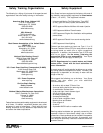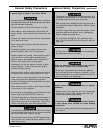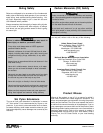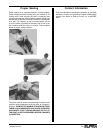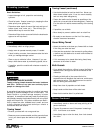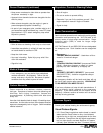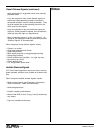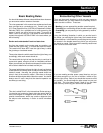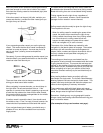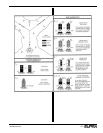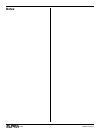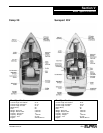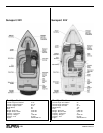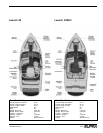
— 14 © 2006 Skier’s Choice, Inc.
Visual Distress Signals (continued)
boats participating in organized events, and manually
propelled boats.
• If you are required to have visual distress signals, at
least three safety-approved pyrotechnic devices in
serviceable condition must be readily accessible. They
must be marked with a date showing the service life,
which must not be expired.
• Carry three signals for day use and three signals for
night use. Some pyrotechnic signals, such as red flares,
meet both day and night use requirements.
• Store pyrotechnic signals in a cool, dry location. An
orange or red watertight container prominently marked
“Distress Signals” is recommended.
Other recognized visual distress signals include:
• Flames in a bucket
• Code flags November and Charlie
• Square flag and ball
• Black square and ball on orange background flag
• Orange flag (certified)
• Electric distress light (certified) - for night use only.
• Dye marker (any color)
• Person waving arms
• U.S. ensign flown upside down
Audible Distress Signals
U.S. Coast Guard regulations require one hand, mouth or
power-operated whistle or horn, audible for at least a half
mile.
Other recognized audible distress signals include:
• Radio communication (see Emergency Procedures -
Radio Procedures - Radio Communication)
• Radio-telegraph alarm
• Position indicating radio beacon
• Morse Code SOS (3 short, 3 long, 3 short) sounded by
any means
• Fog horn sounded continuously
Notes



